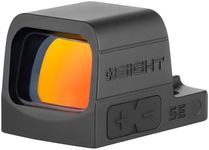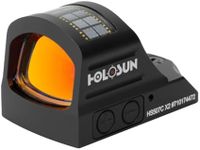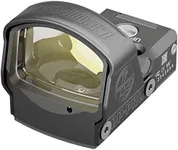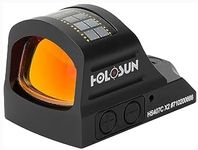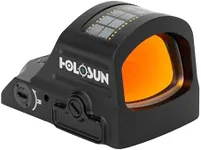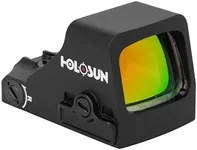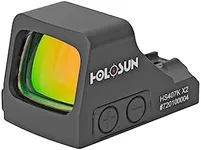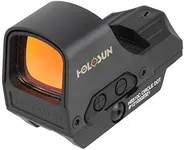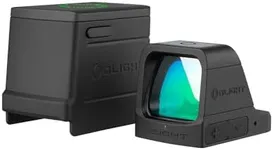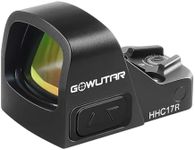Buying Guide for the Best Red Dot Sights
Red-dot sights are popular aiming devices used on firearms, bows, and other equipment to enhance accuracy and target acquisition. They project a red dot onto a lens, which the shooter aligns with the target. Choosing the right red-dot sight involves understanding various specifications and how they align with your specific needs, whether for hunting, competitive shooting, or tactical applications.Dot SizeDot size, measured in MOA (Minutes of Angle), determines how large the red dot appears on the lens. A smaller dot size (1-3 MOA) is ideal for precision shooting at longer distances, as it covers less of the target. Larger dot sizes (4-6 MOA) are better for quick target acquisition at closer ranges, as they are easier to see. Choose a dot size based on your typical shooting distance and the level of precision you require.
Battery LifeBattery life indicates how long the red-dot sight can operate before needing a battery replacement. Longer battery life is crucial for extended use, especially in situations where changing batteries frequently is impractical. Look for sights with battery life ranging from hundreds to thousands of hours. If you use the sight frequently or for extended periods, opt for a model with longer battery life to ensure reliability.
Reticle Brightness SettingsReticle brightness settings allow you to adjust the intensity of the red dot to match lighting conditions. More settings provide greater flexibility, enabling you to use the sight in various environments, from bright daylight to low-light conditions. If you plan to use the sight in diverse lighting, choose a model with multiple brightness settings to ensure the dot is always visible without being too bright or too dim.
Mounting OptionsMounting options refer to how the red-dot sight attaches to your firearm or equipment. Common mounting systems include Picatinny, Weaver, and proprietary mounts. Ensure the sight is compatible with your firearm's mounting system. If you have multiple firearms or plan to switch the sight between them, look for a model with versatile mounting options or quick-detach features for easy transfer.
Durability and Build QualityDurability and build quality are critical for ensuring the sight can withstand harsh conditions and rough handling. Look for sights made from robust materials like aircraft-grade aluminum and those that are waterproof, shockproof, and fog-proof. If you use the sight in demanding environments or for tactical purposes, prioritize models with high durability to ensure long-term reliability.
ParallaxParallax refers to the sight's ability to maintain accuracy when the shooter's eye position changes. Parallax-free sights ensure the red dot remains on target regardless of eye position, enhancing accuracy and ease of use. Most modern red-dot sights are parallax-free at a specific distance, typically around 50 yards. If you need consistent accuracy, especially in dynamic shooting scenarios, choose a parallax-free sight.
Field of ViewField of view (FOV) is the extent of the observable area through the sight. A larger FOV allows for better situational awareness and easier target tracking. This is particularly important in fast-paced shooting scenarios or when engaging multiple targets. If you need to maintain a broad view of your surroundings, opt for a sight with a larger FOV to enhance your shooting experience.
